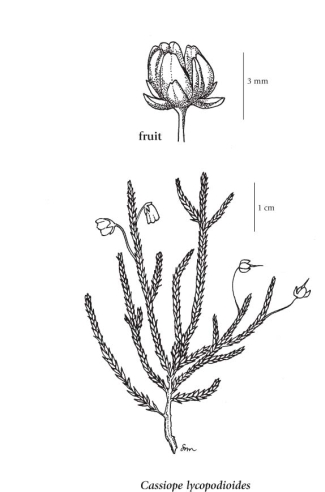Cassiope lycopodioides (Pall.) D. Don
club-moss mountain-heather (clubmoss mountain heather)
Ericaceae (Crowberry family)
Introduction to Vascular Plants
club-moss mountain-heather (clubmoss mountain heather)
Ericaceae (Crowberry family)
Introduction to Vascular Plants
